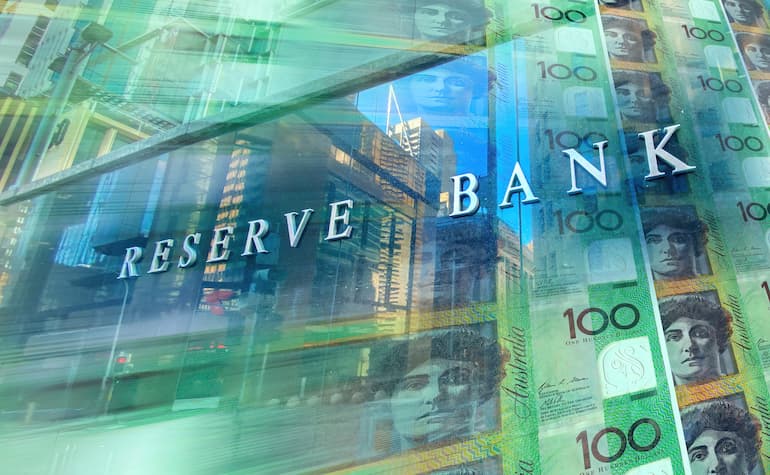Berita & analisis pasar
Tetap selangkah lebih maju di pasar dengan wawasan ahli, berita, dan analisis teknikal untuk memandu keputusan trading Anda.

Multi-Timeframe (MTF) analysis is not just about checking the trend on the daily before trading on the hourly; ideally, it involves examining and aligning context, structure, and timing so that every trade is placed with purpose.
When done correctly, MTF analysis can filter market noise, may help with timing of entry, and assist you in trading with the trending “tide,” not against it.
Why Multi-Timeframe Analysis Matters
Every setup exists within a larger market story, and that story may often define the probability of a successful trade outcome.
Single-timeframe trading leads to the trading equivalent of tunnel vision, where the series of candles in front of you dominate your thinking, even though the broader trend might be shifting.
The most common reason traders may struggle is a false confidence based on a belief they are applying MTF analysis, but in truth, it’s often an ad-hoc, glance, not a structured process.
When signals conflict, doubt creeps in, and traders hesitate, entering too late or exiting too early.
A systematic MTF process restores clarity, allowing you to execute with more conviction and consistency, potentially offering improved trading outcomes and providing some objective evidence as to how well your system is working.
Building Your Timeframe Hierarchy
Like many effective trading approaches, the foundation of a good MTF framework lies in simplicity. The more complex an approach, the less likely it is to be followed fully and the more likely it may impede a potential opportunity.
Three timeframes are usually enough to capture the full picture without cluttering up your chart’s technical picture with enough information to avoid potential contradiction in action.
Each timeframe tells a different part of the story — you want the whole book, not just a single chapter.

Scalpers might work on H1-M15-M5, while longer-term traders might prefer H4-H1-H15.
The key is consistency in approach to build a critical mass of trades that can provide evidence for evaluation.
When all three timeframes align, the probability of at least an initial move in your desired direction may increase.
An MTF breakout will attract traders whose preference for primary timeframe may be M15 AND hourly, AND 4-hourly, so increasing potential momentum in the move simply because more traders are looking at the same breakout than if it occurred on a single timeframe only.
Applying MTF Analysis
A robust system is built on clear, unambiguous statements within your trading plan.
Ideally, you should define what each timeframe contributes to your decision-making process:
- Trend confirmed
- Structure validated
- Entry trigger aligned
- Risk parameters clear
When you enter on a lower timeframe, you are gaining some conviction from the higher one. Use the lower timeframe for fine-tuning and risk control, but if the higher timeframe flips direction, your bias must flip too.
Your original trading idea can be questioned and a decision made accordingly as to whether it is a good decision to stay in the trade or, as a minimum action, trail a stop loss to lock in any gains made to date.
Putting MTF into Action
So, if the goal is to embed MTF logic into your trade decisions, some step-by-step guidance may be useful on how to make this happen
1. Define Your Timeframe Stack
Decide which three timeframes form your trading style-aligned approach.
The key here is that as a starting point, you must “plant your flag” in one set, stick to it and measure to see how well or otherwise it works.
Through doing this, you can refine based on evidence in the future.
One tip I have heard some traders suggest is that the middle timeframe should be at least two times your primary timeframe, and the slowest timeframe at least four times.
2. Build and Use a Checklist
Codify your MTF logic into a repeatable routine of questions to ask, particularly in the early stages of implementing this as you develop your new habit.
Your checklist might include:
- Is the higher-timeframe trend aligned?
- Is the structure supportive?
- Do I have a valid trigger?
- Is risk clearly defined?
This turns MTF from a concept into a practical set of steps that are clear and easy to action.
3. Consider Integrating MTF Into Open Trade Management
MTF isn’t just for entries; it can also be used as part of your exit decision-making.
If your higher timeframe begins showing early signs of reversal, that’s a prompt to exit altogether, scale out through a partial close or tighten stops.
By managing trades through the same multi-timeframe approach that you used to enter, you maintain logical consistency across the entire lifecycle of the trade.
Final Action
Start small. Choose one instrument, one timeframe set, and one strategy to apply it to.
Observe the clarity it adds to your decisions and outcomes. Once you see a positive impact, you have evidence that it may be worth rolling out across other trading strategies you use in your portfolio.
Final Thought
Multi-Timeframe Analysis is not a trading strategy on its own. It is a worthwhile consideration in ALL strategies.
It offers a wider lens through which you see the market’s true structure and potential strength of conviction.
Through aligning context, structure, and execution, you move from chasing an individual group of candles to trading with a more robust support for a decision.


The Bank of England (BoE) is due to release its interest rate decision today, with markets expecting a 12th consecutive hike to take interest rates to 4.50%. There has been increasing speculation that the BoE is reaching its terminal rates and could follow the lead of the US FOMC and the ECB in signaling a slowdown or pause on further rate hikes following the decision today. However, inflation in the UK is yet to signal a sustained slowdown, with the recent March Consumer Price Index (CPI) still above 10%.
The UK economy has been performing better than expected this year, which has seen the GBPUSD rise steadily to trade just below the key resistance area of 1.27, which was last tested in May 2022. Any indication that the BoE could potentially pause on monetary tightening or dissent in the voting (expected 7-0-2) on the rate hike could see the GBPUSD come under renewed downward pressure. A bearish divergence (prices rallying to new highs while the oscillator retraces from a peak) has formed at the resistance level and could signal the potential for a reversal to the downside.
This reversal could be confirmed if the GBPUSD continues to trade lower past the 1.2550 price level, which coincides with the 38.2% Fibonacci retracement level from the short term. The downside on the GBPUSD could be significant, with the next key support level at 1.2350 which aligns with the 38.2% Fibonacci retracement level from the longer term.


In the most recent meeting, the US Federal Reserve hiked rates by 25 basis points, as anticipated, to take interest rates in the US to 5.25%, slightly beyond the terminal rate of 5.1%. However, the US Dollar Index (DXY) fell to the key support level of 100.80 which was last reached in April and February 2023, following the release of the rate hike decision. The DXY trading lower was driven primarily due to comments from Chair Powell where he indicated that the Federal Reserve was “closer to the end than the beginning” and that it “felt like they are close, or even there”.
This signaled to the market that the Federal Reserve could pause on future rate hikes, leading to the weakness seen on the DXY. In the lead-up to the Federal Reserve rate decision, the upside on the DXY was limited by the round number resistance area of 102 and the 200-period moving average (200 MA). With the DXY approaching the key support level of 100.80 and the relative strength index (RSI) heading down toward the oversold region, watch out for the development of price action along the support level.
If the DXY continues to trade lower the next key support level is at 100 which was last tested in April 2022.


Following the lead of the US Federal Reserve, the European Central Bank (ECB) announced its decision to hike rates by 25 basis points, taking interest rates in the Eurozone to 3.75% overnight. In the lead-up to the ECB meeting, there was some market speculation for a potential 50bps hike, which saw the EUR/USD trade to a 12-month high, reaching the 1.1095 price area. During the press conference, President Lagarde highlighted that the ECB was not pausing on future rate hikes, but she indicated some “uncertainty in policy transmission” and that it was “sensible to return to more standard increment”.
This led to the EUR/USD reversing strongly to trade lower and retest the 1.10 round number support level. As the EUR/USD continues to fluctuate between the 1.10 and 1.11 price level, further upside potential could be limited, with the key resistance level at the 1.12 price area. If the DXY recovers in strength, look for significant correction to the downside on the EUR/USD with the next key support level at 1.08.
However, confirmation for the downward move would be signaled only if the price breaks below the crucial level of 1.095 which is a confluence of levels with the 23.60% Fibonacci retracement, short-term upward trendline, and the 200 moving average.


Crude Oil has always been one of the most popular and highly traded markets for CFD traders whether it is WTI or Brent, especially recently as geopolitical and economic forces have seen its price fluctuate from extreme lows to extreme highs. It’s easy to see why, Oil is a bellwether for the health of the global market, oil greases the wheels of global commerce and with CFDs it’s possible to take a position in this exciting market, whether you think the price will head up or down. In this CFD Oil trading Article we will look at the following: How to use CFDs to trade oil Fundamental forces that drive the price of oil Popular technical strategies for trading oil CFDs How to use CFDs to trade oil CFDs or Contracts For Difference allow you to speculate on the price of oil, without owning the underlying asset.
A spot oil CFD tracks the price of the spot market being the cleanest and most efficient way to speculate on the price of oil. They also allow you to take a position in both directions, you would enter a buy (Long) positions if you believed the price will rise, or a sell (Short) position if you believe the price will fall. With Long positions you are looking to buy and sell at a higher price at a later time to profit on the trade.
With a Short position you are selling with the view to buy back at a later time to profit on the trade. At GO Markets we offer our clients the worlds most popular oil trading platform in Metatrader 4 and 5, another advantage to these CFD trading platforms is the ability to automate oil trading strategies. Other advantages to trading oil CFDs with GO Markets: Trade 23 hours a day on WTI oil, 21 hours a day on Brent oil, unlike an ETF or oil company listed on a stock exchange that is only open while that stock exchange is open.
Leverage – the margin required to open the trade will be a fraction of the face value of the position depending on what leverage you are comfortable with. Flexibility in position sizing starting from 0.1 lot ($0.10 USD per point movement in oil) unlike oil futures which have rigid contract sizes. Rolling contract, no expiries such as in options or futures to worry about.
To Enter a position in Metatrader, you would bring up a deal ticket by clicking “New Order” then select your position size, any Stop Loss or Take Profit levels you want the position to automatically close at and hit Buy or Sell. As with any instrument, make sure you are familiar with the lot sizing. 1 standard lot in oil (USOUSD and UKOUSD) is 100 barrels, or $1 USD a point so make sure you set the volume to a level commensurate to your account size and risk appetite. Now, the next question is how you decide on a buy or sell, let’s look at the fundamentals of what drives oil and some technical analysis you can use to answer this question.
Fundamental forces that drive the price of oil Both WTI oil (USOUSD) and Brent Oil (UKOUSD) are highly correlated and will both be referenced as “oil” in the below. While no one reason can be fully attributed to movements in the price of oil, there are an important few fundamental drivers that will influence the price and whose relationship has been time tested. None of these on their own should be used as a sole reason to enter a position, but having the fundamentals on your side will certainly give you an advantage.
The main fundamental drivers in my experience are The perceived health of the global economy OPEC+ production cuts or increases Geopolitical issues The perceived health of the global economy Oil is the driver of commerce, it is needed for the transport and manufacturing of goods and getting people around. If economic conditions are deteriorating, it means less economic activity and the need for less oil sending the price down. A global economy which is seen as “hot” means more economic activity and more demand for oil, seeing it’s price increase.
A clear chart to see this is the price of oil as compared to the US 10-year bond yield over the years. You can see the price of oil and the yield are highly correlated, this is due to yields going up when the economy is “hot” and yields falling when the economy enters a period of contraction, similar price drivers to oil. The black line is WTI oil price, the orange US 10-year yields going back 10 years.
Source: tradingview.com OPEC+ production cuts or increases The Organization of the Petroleum Exporting Countries (OPEC) is a cartel of leading oil-producing countries formed in order to collectively influence the global oil market. OPEC started with a handful of Middle Eastern oil producers in 1960, and has since grown to 24 members in OPEC+. Even thought the USA is currently the worlds top oil producer, OPEC+ countries as a whole still dominate global oil supply and decisions made by the cartel can have a dramatic influence on the price of crude oil.
Market share of oil producing nations: Source: gisreportsonline.com OPEC+ hold regular meetings during the year, normally the expected result is well telegraphed, but sometimes there can be a surprise, such as at their latest meeting on Sunday April 2 nd, 2023, where a surprise production cut was announced, seeing the price of oil gap significantly higher on Mondays open, showing oil traders to always approach these meetings with caution. Geopolitical issues The last three years has seen some very influential geopolitical events, or “black swans” and oil being closely tied to the health of the global economy has seen some very big moves on the back of these events. The Pandemic and its related lock downs and slowing of global commerce saw the price of oil slump to all time lows, followed by the war in Ukraine which saw oil jump to multi year highs on the fear of supply disruptions (Russia is the second biggest oil producer in the world) The chart below illustrates this: Oil traders especially need to be aware of geopolitical risks as the above chart shows.
Technical strategies for trading oil CFDs While having a good understanding of the fundamentals (in my opinion) is important to help you choose the best trades most traders will use a combination of technical analysis and fundamentals with the aim for higher probability outcomes in their trades. Some traders will use technical analysis exclusively without any interest in the fundamental drivers using things such as RSI oscillators, support and resistance areas and trend lines solely to decide on their trade direction. Which option is best is solely up to the trader, their time frames for the trades and risk appetite, all can work, and all can fail neither option can be seen as “better” than the other, it all depends on the individual trader.
Technical analysis is an art in itself and there is a lot to learn on this subject, I encourage anyone interested to research the many weird and wonderful technical analysis strategies that are documented online. But let’s take a look at a popular technical indicators that oil traders use to make their trades. Support and Resistance Support and resistance are one of the most widely used and accurate (when used correctly) technical indicators that can be used by traders.
Support and Resistance areas are points in the market where the price is held from going lower (Support) or going higher (Resistance), these are areas where buyers or sellers are entering the market as they see value in the asset at that price. These levels can last a long time or be temporary and can be used to predict turn arounds in the market, or a break of these levels could indicate a further push in that direction. Oil is also particularly sensitive to psychological levels around “big figures” or rounded number, e.g. 79.00 and 74.00 As can be seen on the chart below.
Hopefully this article has given you an interest to learn more about trading oil with CFDs. Feel free to contact the GO Markets team if you have any questions on trading oil CFDs and opening an account with us.


The Australian interest rate is currently at 3.85% and the most recent consumer price index (CPI) released at 6.8% which indicates slightly higher than expected inflation growth (expectation was 6.4% with previous data at 6.3%). This puts more focus on the upcoming interest rate decision from the Reserve Bank of Australia (RBA). While further rate hikes could apply added pressure onto the economy as households face increasing mortgage repayments, on the other hand, the series of previous rate hikes have not signaled that inflation growth is likely to slow down sustainably towards the RBA’s target level.
Market analysts are split between a hawkish hold (keeping rates at 3.85% while signaling a possible hike in the 3rd quarter, depending on further data) or continuing with another hike of 25bps to 4.1%. With the AUDUSD currently trading along the 0.66 price level, a hawkish interest rate decision from the RBA could see the AUDUSD break above the resistance at 0.6650, formed by the 200 moving average. The expected price action could be similar to that seen following the RBA’s surprise decision to hike rates by 25bps at the May meeting.
In this scenario, the AUDUSD could trade toward the immediate key resistance level of 0.68 with further sustained upside likely to depend on the volatility of the DXY.


Charles Schwab Corporation (NYSE: SCHW) announced the latest financial results for the first three months of 2023 ended March 31, before the opening bell on Wall Street on Monday. Company overview Founded: 1971 Headquarters: Westlake, Texas, United States Number of branches: 400 Number of employees: 35,300 (as of December 2022) Industry: Financial services Key people: Charles R. Schwab (co-chairman), Walter W.
Bettinger (co-chairman & CEO) The results The company reported revenue that fell slightly short of analyst expectations at $5.116 billion vs. $5.134 billion estimate. Earnings per share reported at $0.93 per share for the quarter vs. $0.90 per share expected. CEO commentary ''When I drafted my first letter to stockholders 15 years ago in the middle of the financial crisis, I outlined four factors that helped distinguish Schwab from other financial institutions during a very challenging time for global markets: a strong financial foundation, a client-centric strategy, a disciplined operating approach, and a diversified business model.
These characteristics remain every bit as relevant to our story today. We continue to consistently manage the business in a conservative manner, with an unwavering long-term orientation. Our ongoing commitment to this consistency of mission, including our “Through Clients’ Eyes” strategy, highlights why we maintain the ability to meet the needs of individual investors and the advisors who serve them through various environments,'' CEO, Walter W.
Bettinger said in a letter to shareholders. ''While equity markets rebounded from year-end 2022 levels, investor sentiment remained bearish – especially following the onset of the banking industry turmoil in early March. Fixed income markets also reflected growing fears of an economic downturn as the 10-year U.S. Treasury yield declined approximately 50 basis points from its intra-quarter peak to end March just under 3.50%.
Through the various ups and downs to start the year, Schwab remained a trusted partner to investors. During the quarter, clients opened over 1 million new brokerage accounts and entrusted us with $132 billion of core net new assets – including over $53 billion in March alone. While Investor Services gathered approximately $60 billion during the period, the Advisor Services segment posted a record first quarter with over $71 billion in net flows and attracted 70 transitioning advisor teams.
These near-record inflows across both our primary businesses represents an annualized organic growth rate north of 7% and helped push total client assets to $7.58 trillion at quarter-end.'' Shares closed up by +3.94% on Monday at $52.73 a share. Stock performance 1 month: -6.55% 3 months: -36.81% Year-to-date: -37.02% 1 year: -30.03% Charles Schwab Corporation price targets Barclays: $56 Morgan Stanley: $65 Citigroup: $65 Credit Suisse: $68 Goldman Sachs: $75 Deutsche Bank: $83 Piper Sandler: $95 JP Morgan: $97 Charles Schwab Corporation is the 147 th largest company in the world with a market cap of $95.10 billion, according to CompaniesMarketCap. You can trade Charles Schwab Corporation (NYSE: SCHW) and many other stocks from the NYSE, NASDAQ, HKEX, ASX, LSE and DE with GO Markets as a Share CFD.
Sources: Charles Schwab Corporation, TradingView, MarketWatch, MetaTrader 5, Benzinga, CompaniesMarketCap, Wikipedia

